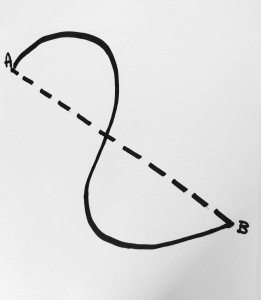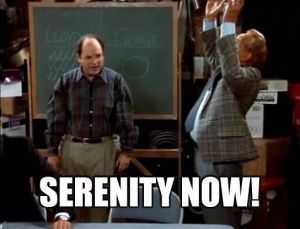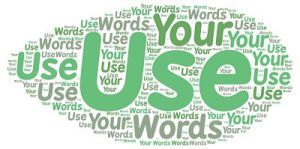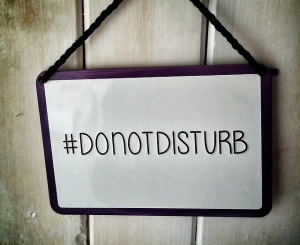Susan Hunter's Blog, page 10
August 4, 2016
Easier, Faster, Better

New! Improved! All Right Here!
My father could never resist the allure of gadgets—inside-the-shell egg scramblers, shiatsu massage pillows, battery-operated hand-held cooling fans—anything that offered easier, more effective or just more fun ways to do things captured his attention and often his wallet. He would proudly show off his newest find, usually saying “Look at this. It’s pretty neat!”
Inevitably such purchases wound up gathering dust in the back of a cupboard, or relegated to a garage sale table where another seeker of coolness on a hot summer day, or perfect scrambled eggs could succumb to their attraction.
While I did not inherit his susceptibility to the siren song of ShamWows or snow cone makers (another sibling received that gene) I am a victim of a variant strain. I find it extremely hard to withstand books, articles and webinars that promise the best, most effective, most insightful, must have, must learn, must do, fail proof methods for writing.
My office bookshelves are lined with titles like Writing the Modern Mystery, Writing and Selling Your Mystery Novel, How to Write Killer Fiction, You Can Write a Mystery Novel, Writing the Breakout Novel, and many more. Each offers the reader a method, a formula and in some cases charts, graphs and diagrams that if applied correctly will lead to a well crafted, well written book for even the most rank amateur author. Intellectually I know such promises are seldom fulfilled; emotionally I find them hard to ignore.
I can never quite accept that while there are definitely basic elements common to all good writing, and certain rules that should be followed, particularly in the mystery genre, there isn’t any magic formula. In other words, once you’ve studied and internalized the ground rules, you have to find your own way to do the work.
I’m almost finished with the first draft of the third Leah Nash book. Envious of other authors who are able to churn out three or four or more books to my one per year, I decided to do things differently this time. The book du jour on writing that caught my attention emphasized the importance of pre-planning and outlining, and suggested that adhering to its method would speed the writing process and require less revising. Unfortunately, I’ve never been a very good outliner. Creating a step-by-step approach to the story brought out my tendency—never too far from the surface—to over explain and risk drowning in detail.
The more I tried to map out plot points, raise stakes by rote and follow my outline, the harder and more tedious the writing was. Eventually, I fell back into more familiar rhythms, and my writing speed began to pick up. I am now closing in on the end of a first draft. Once again my quest for the perfect writing process has eluded me. This draft, like the others, will require multiple revisions and much editing. On the other hand, flawed thought it may be, it’s a process I’m comfortable with and it seems to work for me.
So, although like my dad, I will doubtless be tempted by the promise of the next shiny new thing—in my case writing advice books—I’m going to close my eyes, hum softly to myself and walk on by. Unless, of course, I see one that looks, as my dad would say, “pretty neat.” Then, maybe, I’ll just take a little peek.

July 21, 2016
Someone To Watch Over Me

An accident waiting to happen?
I’ve always felt—and experience seems to bear this out—that I suffer from more bumps, trips, tangles and thumps than the average person. This is partially caused, no doubt, by my failure to acknowledge the power of the preventable moment. For those who haven’t read my previous blog on the subject, a preventable moment results from that split second when you could choose to avoid catastrophe, but don’t. For instance, if you choose to climb the stairs while balancing a stack of containers filled with tiny glass beads, anchored in place by your chin, trust me, nothing good will come of it.
Despite this knowledge, I continue to act without regard for the preventable moment and suffer the consequences. Yet I’ve witnessed others doing the same ill-advised things and emerging with their dignity and their beads intact. My conclusion has been that there must be a malevolent force in the universe that takes perverse delight in steering me into the path of chaos more often than it does others. But I had that thinking challenged recently while at lunch with a friend.
I began to tell her about my latest fiasco. As I did, I slid out of the booth to put on my jacket because it was chilly in the restaurant. As I pulled it back on, I continued my story. I noticed my friend’s eyes widen as I spoke, and I assumed she was identifying with my tale of woe.
But when I concluded and sat back down, she didn’t commiserate with me. She couldn’t because she was convulsed with laughter. Now, while my anecdote might have been mildly amusing in places, it didn’t rate high enough on the hilarity scale to account for that much laughing.
When she could speak again, she explained that as I stood in the aisle sweeping my jacket up and over my shoulders like a matador waving a cape, a waiter carrying a tray full of beverages had emerged from the kitchen behind me, and only missed being taken out by my coat because he made a smooth maneuver to my left. I remained oblivious. Another near miss occurred seconds later as I flung out my arm searching for the opening of my sleeve and a waitress narrowly averted dropping a tray of dirty dishes on my head. Again I was blissfully unaware that I’d been rescued from catastrophe.
That was when I had my epiphany. I often bemoan the mishaps that befall me as I navigate through the world with a whine of Why me? But there in the restaurant my friend witnessed me escape from almost certain disaster not once, but twice while I stood in total ignorance. So I wondered, what if I’ve had it backwards all these years?
What if only a fraction of the calamities that could beset me actually have? What if I’m actually rescued from disaster far more often than I suffer it, but I’m too obtuse to recognize my good fortune? Could it be that instead of a malicious energy propelling me into calamitous results, there may actually be a benevolent force steering me away from the worst effects of my ill-fated decisions?
I don’t know. But I like to think so.

July 7, 2016
The Shortest Distance

Between two points of view
A few days ago my husband and I were on a morning walk. As we crossed the street, after having looked both ways, a car zoomed around the corner in a fast right turn, nearly hitting us before the driver realized we were in the crosswalk and slammed on the brakes. Startled, we scurried across to the other side, giving a reflexive apologetic wave for the near collision—though it was not our fault.
The driver reciprocated, but with the familiar one-figure salute which was definitely not an expression of remorse for his careless driving. Our “politeness” had given him license to believe that he’d done nothing wrong, that we were careless pedestrians impeding his progress. That’s when I started thinking about how much misunderstanding and resentment is created by unclear communication masquerading as good manners.
Now, I’m not advocating that pedestrians take a stand for straight talk by calling out drivers bearing down on them in SUVs or giant trucks. Nor am I saying that civility should be abandoned and we must unwaveringly opt for brutal honesty in all encounters. But I am leaning toward cleaning up some of what passes for politeness, when it’s really just avoidance of the awkwardness of direct confrontation.
Some years ago I was unhappy with the way my stylist was cutting my hair, but I found it almost impossible to tell him directly. It seemed rude, harsh and uncomfortable. I ended the problem by never making another appointment with him and going elsewhere.
But it wasn’t really a solution, because I didn’t give him the true courtesy of honesty. I didn’t say that after years of cutting my hair, I felt he’d become half-hearted, disinterested and disinclined to listen to what I wanted. And equally important, by avoiding an open exchange, I didn’t give him the chance to tell me his perspective—maybe my expectations were unrealistic, maybe I wasn’t clear about what I wanted. Because I didn’t have the conversation, neither one of us had the chance to learn anything, and both of us were probably equally dissatisfied with the way a long-term professional relationship ended.
A similar thing happened not long ago when I contracted with someone for a service I needed to publish a book. The person was a casual acquaintance, not a friend exactly, but someone I knew and liked. When the project took much longer than expected I became frustrated.
However, because I wanted to be “polite,” ( but really because I didn’t want the awkward feeling conflict engenders), when I finally addressed the situation, I wasn’t direct. Instead I apologized for “pushing” on the deadline, said I was sorry to be a pain, but I needed the project finished. I didn’t say that the slow pace of the project and the lack of updates on progress had caused serious problems for me. I came away sensing that despite my careful tippy-toeing around the issues, I’d upset and irritated the person.
In the end, the job was well done, but our working relationship became a casualty of misunderstanding and avoidance. Neither of us took the opportunity—uncomfortable and difficult though it might have been—to clearly express the issues as we perceived them and work through them. So we just walked away.
It’s hard to be direct when we’re trained to be nice. But the short-term discomfort of a truthful conversation can contribute to the long-term comfort of a healthy relationship in work and in life. With one important caveat. If we screw up our courage to speak honestly, we have to be prepared to listen openly should the other person decide it’s time for a few home truths as well.
The shortest distance between two points is a straight line. The shortest distance between two people is a straight talk. Ultimately that might be the greatest courtesy of all.

June 19, 2016
Something Will Turn Up

We can’t all, and some of us don’t. That’s all there is to it.
I’ve been thinking about a couple of favorite, though very diverse literary characters today in relation to my own outlook on life—Eeyore and Mr. Micawber. Eeyore is the old donkey from Winnie-the-Pooh, who is prone to a gloomy take on things. As when he responds to a cheery good morning from the irrepressible Pooh bear:
“If it is a good morning,” he said. “Which I doubt,” said he.
He’s the polar opposite of Mr. Micawber from Charles Dickens’ David Copperfield. Mr. Micawber answers every self-made crisis in his disaster-filled life with the confident, cheerful assertion: “Something will turn up.”
I definitely come down more on the Eeyore side. Though I’d like to be on Team Micawber. I admire positive thinking and its power to motivate, sustain and even to affect outcomes for the better. Hey, I rooted for the 1980 US Olympic hockey team; I cheered when Erin Brockovich prevailed, and I learned to believe from my daughter’s obsession with Dirty Dancing that nobody puts Baby in the corner.
Still, I often find myself focusing on the negative things in life, anticipating failure or frustration before they happen. If by chance things do turn out well, I usually have a “yes, but” qualifier to contribute, designed to tamp down any feelings of irrational exuberance.
“Great, you got a second interview for the job!”
Yes, but they’ll probably hire the internal candidate.
“Yay! we raised enough money to fund the project!”
Yes, but it’s going to be really hard to find volunteers.
“Wonderful, your book has over 100 positive reviews!”
Yes, but there are five that say my book is boring and stupid.
No wonder I’m such a hit at parties.
But I discovered that I’m not alone. It turns out that the human brain is wired to anticipate and hold onto negativity. The amygdala, an almond-shaped set of neurons deep in the mid-brain, is a key player in directing our feet to the darker side of the street. It processes and stores the emotional content of experiences and devotes 2/3 of its neurons to negative emotions like fear and anxiety, which tend to stick around a lot longer than positive feelings, which dissipate pretty quickly. Psychologist Rick Hanson explains it this way on his website, “The brain is like Velcro for negative experiences, but Teflon for positive ones.”
Which means that the way we respond to events in our lives is rarely strictly rationale, often not positive, and always connected to the emotional memories stored from previous unhappy encounters with people, places and things. Now that’s pretty depressing. However, I did also learn, courtesy of Dr. Hanson’s website, that all is not lost. See, positive thinking already!
It’s possible to fit more upbeat emotional memories in, even though our brains are biased toward holding onto the negative. And it isn’t very hard. Dr. Hanson’s suggestion is to focus on one of the small good experiences we all have in a day—a perfectly toasted piece of bread, a gorgeous sunset, the sound of a bird singing. Anything that gives you a happy little lift. Hold it in your mind for at least 20 or 30 seconds. Really think about it and relive the small gift of gladness it gave you.
That little focused pause in your day will give your neurons time to fire off and hardwire a new memory with pleasurable emotional content. In theory if you do it enough, you’ll build a network of joyful emotional responses that diminish the Eeyore effect, and instead invoke the sunnier outlook of Mr. Micawber. For whom, incidentally, something very good ultimately did turn up.
It may work, it may not. Which sentence proves that I’m still a recovering Eeyore–but then aren’t we all works in progress?

June 2, 2016
It’s About The Journey
 Years ago when I first started meditating I had some pretty high expectations. I envisioned that as I became “better” at the practice, I would eventually achieve a Buddha-like calm that would carry me above the fray of daily disappointments and frustrations. I would be composed, kind, and serene in all situations. That has not happened, even after years of practice. I am not transported to a higher plane, nor am I at one with the Universe, nor am I awakened. Sometimes, I’m not even awake.
Years ago when I first started meditating I had some pretty high expectations. I envisioned that as I became “better” at the practice, I would eventually achieve a Buddha-like calm that would carry me above the fray of daily disappointments and frustrations. I would be composed, kind, and serene in all situations. That has not happened, even after years of practice. I am not transported to a higher plane, nor am I at one with the Universe, nor am I awakened. Sometimes, I’m not even awake.
Quite often when sitting in mediation, I’m beset with nagging reminders about things I forgot to do. Thanks, unconscious, for making me realize NOW at 11 p.m. that I left my cell phone at my sister’s house. Or else I drift into a reverie that leads me randomly through old hurts and new grievances. Eventually I realize with a start that instead of floating in a state of higher consciousness, I’m reliving some very negative feelings associated with mean Marsha, my kindergarten nemesis.
I once complained to a friend whose serenity and spiritual insights I valued that I wasn’t getting anywhere meditating. She asked me where it was that I was trying to go. As a fairly goal-oriented person, I stared at her in surprise. Why do something, if it doesn’t lead you anywhere—to a better self, a better life, a better place?
She suggested in her gentle, nonjudgmental way, that perhaps I could focus more on the journey than on the destination. That constantly trying to measure success in terms of consecutive minutes without a distracting thought, or total serenity in the face of a crisis was missing the point. Meditation, she said, is about being, not doing. It’s about facing the silence inside ourselves and in that aloneness, finding connection with our true selves, and with others.
As you can no doubt see, she was much more spiritually evolved than me. But what she said made a kind of sense, and it’s why I continue to meditate despite not achieving my “Serenity Now!” goals. I can still get really mad when someone cuts me off in traffic. Occasionally I still have to sit on my hands in a meeting so I don’t throttle the person who keeps droning on about issues already asked and answered. I still lie awake sometimes in the wee small hours of the morning, worrying about problems that aren’t mine to solve, and plotting solutions no one has asked me for—the curse of the conscientious control freak.
But there are times, too, when I can be the observer of my own actions, when I have a moment of clarity that wells up from that still place within. Instead of going to default behaviors: irritation, anxiety, anger, frustration, I’m able to pause and just be, if only for the moment. And though the chaos of living sometimes pulls me away from meditation, often when I need it most, I always return. After all, it’s about the journey, not the destination. Om.

May 18, 2016
There Are No Words
 The right word at the right time can be life-affirming and even life changing. But the wrong word at the right time is downright hilarious. Back by popular demand this week is a selection of favorite Garyisms.
The right word at the right time can be life-affirming and even life changing. But the wrong word at the right time is downright hilarious. Back by popular demand this week is a selection of favorite Garyisms.
Faithful readers may recall that my husband Gary is a man of action, not words. In fact he sometimes seems to view words as barely necessary accompaniments to the action adventure that is his life. Consequently, he doesn’t waste a lot of time searching for the right word, or even for any combination of consonants and vowels that is actually a word at all. Any verbal utterance that will take him from one idea to the next will suffice, or so it seems. Without further ado, here are some of his best.
Gary’s favorite flicks involve action and one of his long-time favorite stars/directors is Clint Eastwood. When I asked him which Clint Eastwood movie topped his list, he said Pot of Gold. I’m not overly familiar with the Eastwood film output, but I was pretty sure that wasn’t one of his movies. The correct title of course is Fistful of Dollars.
One Saturday morning, Gary was taking inventory of our freezer stock before going grocery shopping. He came in from the garage to tell me “You have two iotas in the freezer.” Yes, it was true. I did have two bags of Ore Ida potatoes in the freezer. On another grocery-related occasion, I sent him to the store with a list. Upon returning he informed me, “I couldn’t find the albatross. I got the light tuna instead.” A wise choice. I find albatross is no substitute for albacore tuna.
Recently we were going out to dinner, and Gary looked extra spiffy and smelled very nice too. When I commented, he said “Thanks, I used face deodorant today.” Now, I did have to reflect on that for a few seconds, until I realized he was telling me that his new after shave accounted for his pleasant scent.
Gary is quite an astute observer of human nature and very insightful about people’s motivations and emotions. Once, Gary noted that a friend had chosen a woman who wasn’t a good match for him. He added that he wasn’t going to say anything to his friend, both because it wasn’t his business and because the friend seemed to be deeply under the woman’s spell. Only the way he expressed it to me was: “It wouldn’t do any good. He’s just too amorized of her.” Enamored + mesmerized = amorized.
He came home from coffee the other day to tell me that a friend who does a lot of air travel had told him about the special socks he was using to prevent blood clots on long flights. “They’re called concussion socks.” No. No they’re not. They’re called compression socks.
The thing I enjoy so much about Gary’s special take on words is that he utters them fearlessly and with complete confidence. There is no hesitation, no searching for the right word or turn of phrase: there is just thought and immediate expression. When we were running one day with our usual heavy, struggling tread, I mentioned how effortless some runners who passed us seemed. Their strides were so graceful and smooth, they looked as though they were floating. Gary said, “Yeah. They call them light bodies.”
No, no ‘they’ do not call them ‘light bodies.’ Only Gary does. But maybe everyone else should.

May 6, 2016
Take the LARP
 I learned a new word last week—well, actually an acronym that through increased use has become a full-fledged noun: LARP. It’s been around for quite awhile, but I hadn’t come across it until I saw a headline in the local paper. I liked the sound the word made in my mind, so I read the story.
I learned a new word last week—well, actually an acronym that through increased use has become a full-fledged noun: LARP. It’s been around for quite awhile, but I hadn’t come across it until I saw a headline in the local paper. I liked the sound the word made in my mind, so I read the story.
LARP stands for Live Action Role Playing, and it refers to an imaginative live action game with a storyline determined by a game master. The players, usually in costume, take on character roles and pursue a goal or goals in a fantasy world, often vaguely medieval along the lines of Games of Thrones. They stay in character and use the physical world around them as the stand-in for their imaginary one. There are strict rules laid out, and the actions the players take determine whether they succeed or fail. The stakes are high, in that failure usually means “dying.”
I was struck by two things as I read the story: the age of the players—mid-teens, and the invention of a new word—LARPing—to describe what I’ve always just thought of as “playing.” In our neighborhood there were epic battles won and lost, sometimes in costume, in imaginary worlds that we created in backyards and empty lots, on riverbanks and wooded acres. We sometimes brandished sticks for swords and cardboard shields, occasionally had costumes made from discarded clothing and old bedsheets, and always had strict rules of play, typically pre-determined by the alpha kid in our group who we did not realize at the time was actually our game master. In that way, we were LARPing without knowing it.
But the players in our games were almost always under 12. The participants in the article that brought LARPing to my attention were teenagers. Thus I was inclined to doubt their maturity and dismiss LARPing as a silly time waster for the socially undeveloped. Because that’s how I roll. Judge first, think later. If there were any justice in this world, I’d be sporting a “J” for judgmental on my chest.
Fortunately, I did rethink things following a discussion of LARPing with several people, and a bit more reading on the subject. I began to consider that the desire for imaginative play among young adults—and some much older—might be rooted in an unconscious desire to escape from a world where we often feel we have no control over the events around us. Perhaps as teens on the brink of adulthood, or adults on the brink of insanity, our inner child comes to the fore and urges us to retreat to a place where we are the captains of our fate, the masters of our destiny. Then again, maybe it’s not retreating at all. It takes creativity, not just determination, to solve real world problems. Imaginary play can be a way to hone the gift of creative thinking.
And what is writing fiction but a variation on LARPing? Creating a world, developing a storyline, populating it with characters and functioning as the game master. So far I haven’t started dressing up like my lead character Leah Nash (though I do have a pair of pajamas strikingly similar to hers) but I have a website with maps of her imaginary town and coming soon is a drawing of her new apartment on the site. If that’s not a bit of a retreat into childhood games, I don’t know what is.
There are as many variations on LARPing as there are people who enjoy the pursuit—Jane Austen LARPs, Harry Potter LARPs, Mad Men LARPs, and I even saw reference to a Law&Order LARP—now that’s one I could get behind. I don’t see myself leaving the happiness of my corner of the couch to roam outside dressed like Elizabeth Bennett or Lenny Briscoe, but I’ve come to think it’s a fine thing, for those who do.
The creation of something new is not accomplished by the intellect but by the play instinct. ~Carl Jung

April 21, 2016
What Really Matters

Perspective
Last week I was stressing about the leak in our shower, and the delivery that was late, and the repairman who failed to show up, and probably half a dozen other things of no particular consequence that I allowed to assume major importance in my life.
And then I heard some news that really was important and everything else fell away. I learned that a friend of mine had suffered a major stroke. Immediately I flashed back on the lunch we had several weeks earlier. She had outlined her plans for the summer, updated me on a one-time colleague, shared her pleasure in the college class she was teaching, and giggled uncontrollably about the unfortunately named sandwich on the menu, “The Veggini.” We don’t meet often, maybe three or four times a year, but it’s always fun and we made casual plans to connect again in early summer.
Neither of us, of course, had any idea what lay in wait. We never do, and it would probably be unbearable if we did. So we live our lives as though we had infinite power and control. We make plans and pronouncements, decisions and declarations and never acknowledge that lurking over our shoulders is the shadow of uncertainty, mortality, time. Many things are in our hands—our attitudes, our choices, our responses to life’s challenges, but the challenges themselves—whether you believe them sent by God or Fate or the Universe or Chance—occur without regard to our preferences or plans.
Part of coping with that unsettling idea is immersing ourselves in the mundane details of daily life, giving far greater weight to the petty grievances, irritations and disappointments that befall us than they deserve. Focusing on the small things helps shield our consciousness from the oppressive awareness that the most important things in life—the happiness, health and safety of those we care about—are largely beyond our ability to control.
To a degree that’s reasonable and necessary; we all have to live in this world and that living entails petty details. But too often we—or maybe I should just step out there and say “I”—get far too caught up in things that really have no bearing on the essence of life: health, love, emotional and spiritual fulfillment. Why does it take something tragic for me to put things in proper perspective? Why every day that I am healthy, that the people I love are safe, that the sun rises in the morning and sets at night, am I not deliriously happy and grateful?
I’m sending out prayers and positive thoughts for my friend, and hoping that I will do a better job of holding in my heart the things that really matter, and let go of the things that don’t.
“Health is the greatest gift, contentment the greatest wealth, faithfulness the best relationship.” ~ Attributed to Buddha, but true no matter who said it.

April 7, 2016
Don’t Quit Your Day Job
 Family and friends sometimes send me links to articles about authors who are making big money selling their e-books on Amazon to inspire me. I appreciate the encouragement, but I actually find the stories more daunting than motivating.
Family and friends sometimes send me links to articles about authors who are making big money selling their e-books on Amazon to inspire me. I appreciate the encouragement, but I actually find the stories more daunting than motivating.
In a recent interview in the Detroit Free Press, Amanda Lee, a former reporter who writes mysteries, romances and a series about witches, said that she turns out about 10,000 words a day. Both of my books, Dangerous Habits and Dangerous Mistakes are slightly north of 100,000 words each. Which means that Ms. Lee could write them both in a month. Yikes. It took me more than six months each. And after a final draft was finished, the necessary proofing, editing, formatting, cover design, promotion and distribution brought the actual production time from start to finish closer to a year for each.
Her breakneck pace has resulted in Ms. Lee writing and publishing some 50 books in the past five years. That translates into an average of about 10 books a year. Last year, according to the Free Press, she made almost $1 million. And she is not the only one. In addition to the super famous writers like John Grisham or Sue Grafton or Stephen King, who one expects are making significant incomes, there are a number of lesser known authors who make six figure incomes annually from their e-book efforts.
And those unknown authors aren’t doing it by writing a breakout novel that shoots to the top of the bestseller list. Instead, they are prolific writers who can churn out multiple books a year. And that particular gift pays off.
Amazon’s royalty rate is 70 percent if your book is priced between $2.99 and $9.99, and 35 percent if it’s priced outside that range. Other e-book publishers have similar rates, Amazon is just the biggest. [Side note: most traditional publishers pay between 6 and 10 percent for paperback book sales, which explains why many authors find self-publishing e-books more appealing.]
The sweet spot for e-books by unknowns is $2.99 to $3.99. If you are a new writer, you’re almost certain to set your price there, and you’ll make roughly $2-$3 per book. If you sell 100 copies of your one e-book a month (which is pretty good for an unknown author trying to get noticed in a sea of more than 1 million e-books on Amazon) you’ll receive between $200 and $300 per month income. But if you have 20 books available for purchase, and you sell 100 of each of them each month, you’ll earn $4,000 to $6,000 a month. The catch, for me anyway, is that there’s no way I can write a well thought out, well edited book fast enough to create a backlist of 20 books in under two years, as many e-book authors do.
It would be really nice if I could. Fortunately, I don’t write to make big money—which is a good thing, or I would be sadly disappointed. I write because I enjoy it, it exercises my mind and gives me—most days—a sense of satisfaction. And if you have a book in you, and they say everyone does, I think you should write it. If you have more than one, I urge you to write them very fast, in which case you may become very wealthy.
But in case you don’t, don’t say I didn’t warn you.

March 24, 2016
My Day at the Office
 When I worked in a traditional job in a traditional office, it was common practice during a push to meet a deadline to retreat to cubicles or offices, close doors, send calls to voicemail, and focus entirely on getting the project done.
When I worked in a traditional job in a traditional office, it was common practice during a push to meet a deadline to retreat to cubicles or offices, close doors, send calls to voicemail, and focus entirely on getting the project done.
I find that harder to do in my home office because the other person who lives in the house cannot easily be ignored by the mere closing of a door. Gary is a very active person for whom to think, is to do. He is in and out of the house at least half a dozen times a day: to have coffee, to attend a meeting, to go to the hardware store, to visit a friend, to talk to a neighbor, to organize a meeting, to go to the post office, to stop at the library. If an idea pops into his head, he acts on it. And he gets an amazing amount of things done in a day.
I, on the other hand, spend quite a lot of time thinking before doing. But once started I like to work straight through for long periods, focused and undisturbed. Gary likes to share regular updates on his progress, and he usually meets this need as he interacts with people on his rounds. Except on the occasional day when he decides to spend time working on projects at home.
This is what my day at the office is like then:
9 a.m. Gary looks at a two-year-old tax return that he has come across “organizing” his files. He calls to me to come downstairs to his desk and look at the item that is disturbing him. I look. It does not disturb me. I go back to my desk.
9:30 a.m. Gary sees something odd on the surface of the river. He goes out to explore. I do not see it because my blinds are closed. He asks me to video what he’s seeing. I go outside to shoot the video. I go back to my desk.
10 a.m. Gary calls me downstairs to hold the tape measurer for him. I do. I do not ask why, or what he is doing. That might land me in a project I want nothing to do with.
10:30 a.m. Gary comes to my office to tell me we’re out of toner for the printer. I suggest he might like to run to the store to buy some. He does.
11 a.m. Gary returns from the store. He comes to my office to tell me about a person I don’t know, who is doing something I don’t care about. Then he gives me some flowers. Now I find it harder to order him out of my office, but I do anyway.
11:15 a.m. Gary calls up to me from his desk downstairs. He asks me if it’s going to snow tomorrow. I tell him I don’t know.
11:25 a.m. Gary comes to my office to tell me that yes, it is going to snow tomorrow.
11:26 a.m. I close my door. Loudly.
11:40 a.m. Gary taps softly on my door and whispers—as though the act of speaking softly cancels out the disturbance—asking if I know where his meeting file is. I do not.
11:45 a.m. I have hung a Do Not Disturb sign on the doorknob. I can hear Gary walk down the hall toward my office, then footsteps retreating after he sees the sign. Then it is quiet. Then I hear him in the kitchen faux whistling an unrecognizable tune—making half humming, half flutey-sounding noises. Then he stops. Then he starts. Then he stops. A few minutes pass. Then he starts again.
I start laughing. Because, well, Gary. I take the sign off the door and catch up on my email instead of writing the next chapter. Tomorrow is another day.





